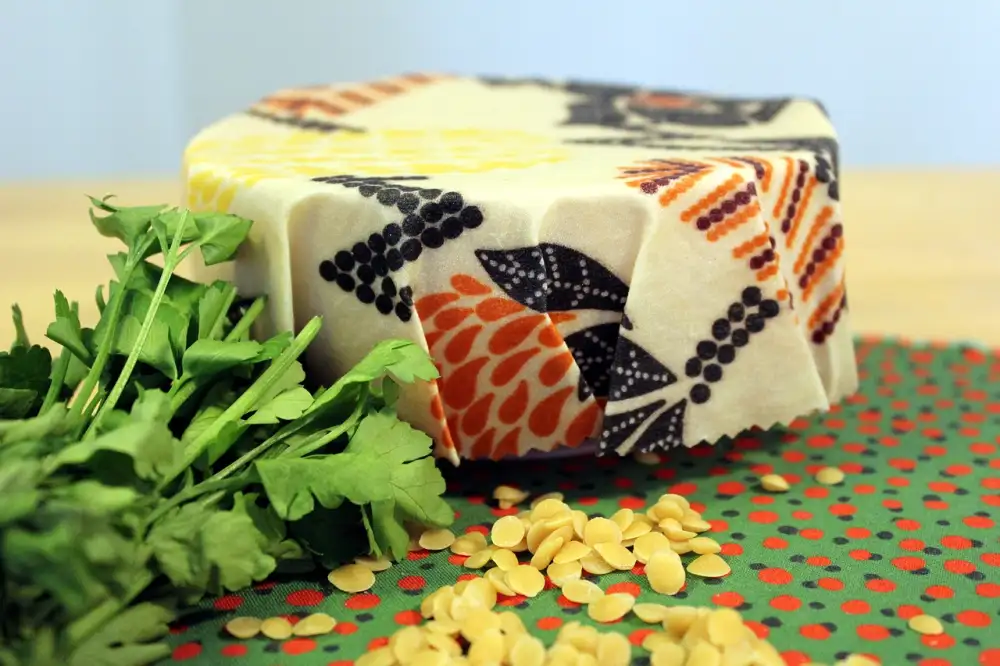Master the Art of Making Homemade Yogurt: A Step-by-Step Guide to Crafting Creamy Delights

Introduction to Homemade Yogurt
Yogurt is a delicious and nutritious treat that has been enjoyed for centuries. While store-bought yogurt is readily available, there's something special about making your own homemade version. Not only does it allow you to control the ingredients and flavors, but it also gives you the satisfaction of creating something from scratch. In this step-by-step guide, we will explore the art of making homemade yogurt, from gathering the necessary ingredients and equipment to incubating and storing the final product. Get ready to embark on a flavorful journey as we delve into the world of creamy delights!
Gathering Ingredients and Equipment
Before embarking on your homemade yogurt journey, it is essential to gather all the necessary ingredients and equipment. The good news is that you don't need any fancy or expensive tools to make delicious yogurt at home.
Firstly, you will need fresh milk. Opt for whole milk if you prefer a creamier and richer texture, or use low-fat milk for a lighter option. Make sure the milk is free from any additives or preservatives.
Next, you will need a yogurt starter culture. This can be store-bought plain yogurt that contains live active cultures. Look for yogurts that mention "live and active cultures" on the label. Alternatively, you can also use freeze-dried starter cultures available in health food stores or online.
To ensure proper incubation of your yogurt, you will need a reliable thermometer to monitor the temperature accurately. A digital kitchen thermometer works well for this purpose.
You will also need a large pot to heat the milk and a whisk or spoon to stir it while heating. It's important to choose a pot with thick bottom to prevent scorching of the milk.
Lastly, you will require glass jars or containers with lids to store your homemade yogurt once it's ready. Mason jars work great for this purpose as they are easy to clean and seal tightly.
By gathering these simple ingredients and equipment beforehand, you'll be well-prepared to start making your own creamy and delicious homemade yogurt.
Preparing the Milk
Preparing the Milk is a crucial step in making homemade yogurt. Start by choosing high-quality milk, preferably whole milk, as it will result in a creamier texture. Pour the desired amount of milk into a clean, heavy-bottomed saucepan and place it over medium heat. Heat the milk slowly until it reaches a temperature of 180°F (82°C). Stir occasionally to prevent scorching and ensure even heating. Heating the milk helps to kill any unwanted bacteria and denatures proteins for a smoother consistency. Once the desired temperature is reached, remove the saucepan from heat and let it cool to around 110°F (43°C) before moving on to the next step. Cooling the milk properly ensures that it doesn't kill the beneficial bacteria in the yogurt starter culture when added later.
Adding Yogurt Starter Culture
Once you have prepared the milk, it's time to add the yogurt starter culture. This is what will transform the milk into creamy and tangy yogurt.
You can use store-bought yogurt with active cultures as your starter, or you can purchase a yogurt starter culture from a specialty store. Make sure to check the label for live and active cultures.
To add the starter culture, simply whisk it into the warm milk until it is fully incorporated. The amount of starter to use will depend on the specific instructions provided with your chosen culture.
If using store-bought yogurt as your starter, aim for about 2 tablespoons per quart of milk. For a stronger flavor, you can increase the amount slightly.
Once added, cover the mixture with a clean towel or plastic wrap to maintain a warm environment for fermentation.
Remember that maintaining a consistent temperature is crucial during this stage. If necessary, place the covered container in an insulated cooler or wrap it with towels to keep it warm.
Allow the mixture to ferment undisturbed for at least 6-8 hours or overnight. This will give enough time for the bacteria in the starter culture to convert lactose into lactic acid, giving your yogurt its signature tangy taste and thick texture.
Keep in mind that longer fermentation times may result in a more tart flavor and thicker consistency. Experimenting with different fermentation times will help you find your preferred taste and texture.
After fermentation is complete, give the yogurt a gentle stir to distribute any whey that may have separated on top. At this point, you can also add any desired flavorings such as honey, vanilla extract, or fruit puree.
Congratulations! You have successfully added the yogurt starter culture and completed another crucial step towards crafting delicious homemade yogurt. Now it's time to move on to incubating your creation and turning it into creamy delights!
Incubating the Yogurt
Incubating the Yogurt:
Once you have added the yogurt starter culture to the milk, it's time to incubate the mixture. This step is crucial as it allows the beneficial bacteria in the starter culture to ferment and transform the milk into creamy yogurt.
To incubate the yogurt, you will need a warm environment with a consistent temperature of around 110°F (43°C). There are several methods you can use:
1. Yogurt Maker: If you have a yogurt maker, simply pour the milk mixture into the jars provided and place them in the machine. Set the timer according to your desired thickness and tanginess, usually between 6 to 12 hours.
2. Oven Method: Preheat your oven to its lowest setting for about 10 minutes, then turn it off. Place your milk mixture in glass jars or a covered oven-safe container and put it in the warm oven. Leave it undisturbed for 6 to 12 hours or until set.
3. Insulated Cooler: Pour your milk mixture into glass jars or a covered container and place them inside an insulated cooler. Fill any empty spaces with towels or blankets to maintain a constant temperature. Close the cooler tightly and let it sit for 6 to 12 hours.
During incubation, avoid moving or disturbing the yogurt as this can disrupt fermentation. The longer you incubate, the thicker and tangier your yogurt will become.
Remember that different strains of starter cultures may require different incubation times, so follow the instructions provided with your specific culture.
Once incubation is complete, remove the containers from their warm environment and check if they have set properly. The texture should be thick and custard-like.
Now that you've successfully incubated your homemade yogurt, it's time to move on to cooling and storing it before enjoying its creamy goodness!
Cooling and Storing the Yogurt
Once the yogurt has finished incubating, it is important to cool it down before storing. This helps to set the yogurt and develop its creamy texture. To cool the yogurt, carefully remove the jars from the incubator and place them in a refrigerator for at least 4 hours or overnight.
During this time, the yogurt will continue to thicken and develop its tangy flavor. Once cooled, cover the jars with lids or plastic wrap to prevent any unwanted flavors or odors from seeping in.
When storing homemade yogurt, it is best to keep it in the refrigerator at a temperature between 35°F (2°C) and 45°F (7°C). This will help maintain its freshness and extend its shelf life. Homemade yogurt can typically be stored for up to 2 weeks, but it is recommended to consume it within 1 week for optimal taste and texture.
If you prefer a thicker consistency, you can strain your homemade yogurt using cheesecloth or a fine-mesh strainer. Simply line the strainer with cheesecloth, place it over a bowl, and pour in the yogurt. Let it strain for a few hours or overnight in the refrigerator. The result will be a rich and creamy Greek-style yogurt that can be enjoyed on its own or used in various recipes.
Remember to save some of your homemade yogurt as a starter culture for your next batch. This will ensure that each batch maintains its unique flavor profile and consistency.
Now that you have mastered the art of making homemade yogurt, get creative with different toppings and mix-ins such as fresh fruits, nuts, honey, or granola. The possibilities are endless!
So go ahead and indulge in your very own creamy delights – enjoy every spoonful of your homemade yogurt knowing that you have crafted something truly special right in your own kitchen.
Tips and Variations for Homemade Yogurt
Tips and Variations for Homemade Yogurt:
1. Experiment with different types of milk: While most homemade yogurt recipes call for whole milk, you can also use low-fat or skim milk. Keep in mind that the texture and creaminess may vary depending on the fat content.
2. Use a yogurt maker or slow cooker: If you want to simplify the incubation process, invest in a yogurt maker or use a slow cooker set to low heat. These appliances provide a consistent temperature, ensuring optimal results.
3. Add flavorings and mix-ins: Once your yogurt is ready, you can customize it with various flavorings and mix-ins. Try adding honey, vanilla extract, fresh fruit, granola, or even chocolate chips to enhance the taste and texture.
4. Make Greek-style yogurt: To achieve a thicker consistency similar to Greek yogurt, strain your homemade yogurt using cheesecloth or a fine-mesh sieve. This will remove excess liquid (whey) and result in a creamier end product.
5. Save some as a starter culture: Set aside a small portion of your homemade yogurt as a starter culture for future batches. This way, you won't have to rely on store-bought cultures every time you want to make yogurt.
6. Experiment with different cultures: While traditional yogurt starter cultures contain Lactobacillus bulgaricus and Streptococcus thermophilus bacteria strains, feel free to experiment with other probiotic cultures like Lactobacillus acidophilus or Bifidobacterium lactis for added health benefits.
7. Use non-dairy alternatives: If you're lactose intolerant or follow a vegan diet, you can still enjoy homemade yogurt by using non-dairy milk such as almond milk, soy milk, or coconut milk as the base.
Remember that making homemade yogurt requires practice and patience. Don't be discouraged if your first few attempts don't turn out as expected. With time, you'll master the art of crafting delicious and creamy yogurt right in your own kitchen.
Conclusion: Enjoy Your Homemade Yogurt
Congratulations! You have successfully mastered the art of making homemade yogurt. Now, it's time to sit back, relax, and enjoy the creamy delights you have created. Whether you prefer it plain or with a variety of toppings and mix-ins, your homemade yogurt is sure to be a delicious treat.
Not only will you savor the rich flavors and velvety texture of your yogurt, but you can also take pride in knowing that you have crafted it with your own hands. Homemade yogurt allows you to control the ingredients, ensuring a healthier and more natural option compared to store-bought alternatives.
Experiment with different flavors by adding fruits, honey, or even spices like cinnamon or vanilla extract. Get creative with your toppings - granola, nuts, and fresh berries are just a few options that can elevate your yogurt experience.
Remember to always store your homemade yogurt in airtight containers in the refrigerator. It should last for about one week, but we doubt it will stay uneaten for that long!
So go ahead and indulge in the goodness of homemade yogurt. Share it with friends and family or keep it all to yourself - either way, this culinary journey has brought you closer to mastering the art of creating creamy delights right in your own kitchen. Enjoy!
Published: 15. 11. 2023
Category: Food



